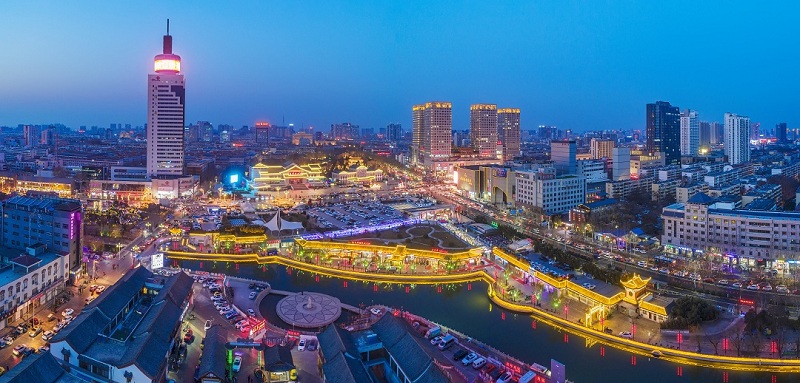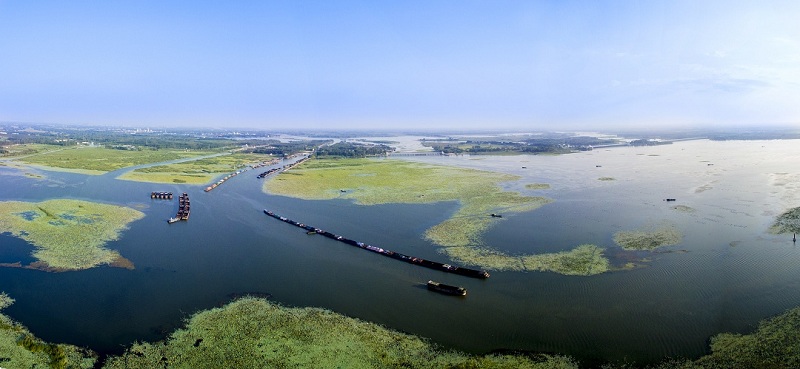Jining: City on Grand Canal
(chinadaily.com.cn)| Updated : 2022-01-28
Print Print
Colored lights illuminate Jining city in East China's Shandong province. [Photo provided to chinadaily.com.cn]
Jining is an old city with ancient buildings and old streets, and a place that has stories of its deep connection with the Beijing-Hangzhou Grand Canal.
More than 700 years ago, the Beijing-Hangzhou Grand Canal started flowing through Jining, making the city an important juncture of land and water as well as a major traffic hub for travelers heading from the south to the north.
Jining was not only superior in geographical location, but also became the political and economic center of the southwestern region of Shandong province as well as the administration center of the canal.
According to historical records, Jining was a thriving transport hub with many boats and ships full of people and cargo along the banks of the canal.
Heart of the Canal
Jining has always been considered the heart of the Grand Canal. It has been said that the whole canal depends on Jining's smooth operations.
Nanwang town in Jining's Wenshang county is the area with the highest elevation along the Grand Canal. The special landform featuring low-lying at both ends and a bulge in the middle formed an arch-like river course and the shipping was frequently suspended due to insufficient water.
How does the Grand Canal handle so many ships so easily? "Supplying water is the key," said Liu Jiankang, associate research librarian at the Cultural Relics Protection Center of the Wenshang County Culture and Tourism Bureau.
According to historical records, in the ninth year of the reign of Emperor Yongle in the Ming Dynasty (1368-1644), Bai Ying, a traditional irrigationist, suggested that building the Daicui Dam on the Kanhe River estuary will divert the water of the Dawen River to the Grand Canal.
"It was a systematic project which was very scientific, complete and meticulous to flexibly use various water sources such as the river, lake, springs and floods to supply sufficient water for navigation, effectively ensuring the smooth flow of the Grand Canal for more than 500 consecutive years," Liu said.

Barges navigate a section of the Grand Canal in Jining, East China's Shandong province. [Photo provided to chinadaily.com.cn]
Because of the importance of the Jining section, the top administration of the Grand Canal had been headquartered in Jining since the Yuan (1271-1368), Ming and Qing (1644-1911) dynasties, signifying that Jining is the real "capital city of the canal".
Jining also gained its nickname "72 Yamen (an ancient Chinese government)" due to many subsidiaries working under the top authorities. Till now, many roads in Jining are still named after these subsidiaries, and there are a total of 66.
The Beijing-Hangzhou Grand Canal was included on the world cultural heritage list on June 22, 2014. By then, Jining had 59 canal civilization heritage sites and 84 related historical civilization heritage sites, which made the city an essential part during the application process.
